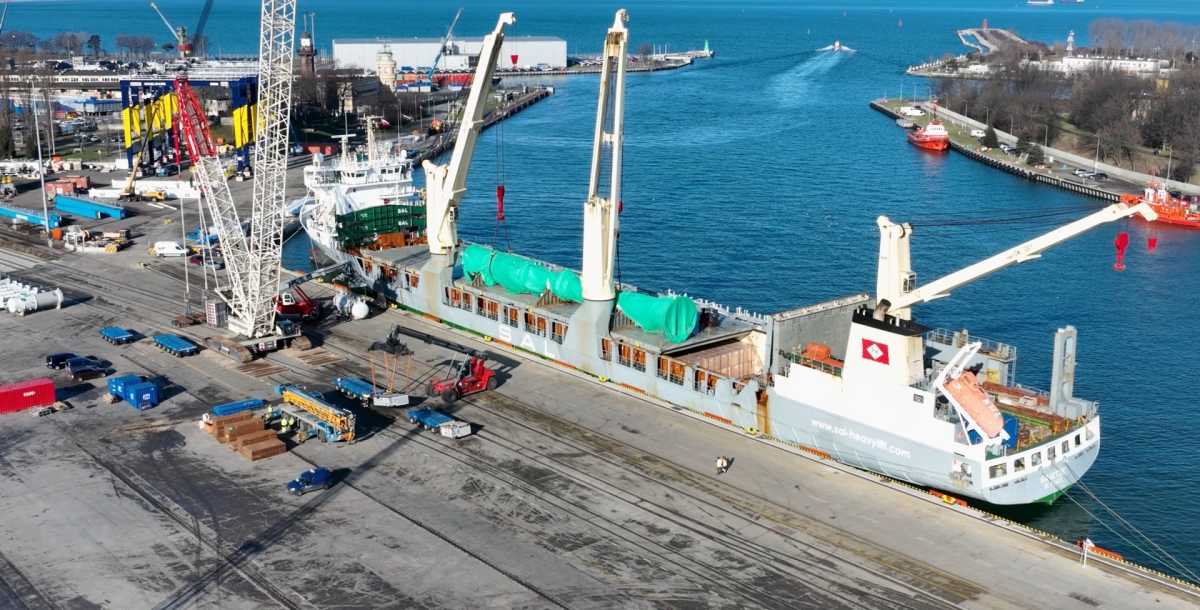
On Sunday, February 12, the Grietje ship from China arrived at the Port of Gdańsk, transporting from Shanghai elements for the construction of the modern Olefins III Complex at Orlen's petrochemical plant in Płock.
Registered in Antigua and Barbuda,
the 152-meter long Grietje transported another part of the elements
for the construction of the Olefin Complex III to Gdańsk. The ship
came from the Shanghai area. The elements unloaded at the Port of
Gdańsk were then loaded onto barges and traveled 400 kilometers up
the Vistula River on their way to Płock. There, the barges were
unloaded on the so-called petrochemical wharf, and on the weekend of
February 24-25, late at night, due to lower traffic, the cargo was
transported from the wharf to the PKN Orlen Production Plant in
Płock.
This is not the first operation of
this type for the Olefin III Complex in Płock, nor will it be the
last. Already in January, the first oversized elements arrived in
Gdańsk from the factory near Shanghai, which were floated further
along the Vistula River. In turn, in April, the transport of the
largest elements is expected: they will be longer than a football
field, because they will measure about 120 meters long and 9 meters
wide, weighing up to 850 tons.
The elements transported by sea
from Asia are necessary for the expansion of the Olefin Complex at
the Production Plant in Płock. PKN Orlen is implementing this
project as part of the strategic Petrochemical Development Program.
It is the largest petrochemical investment in Europe in the last 20
years. The Olefin III complex will occupy approximately 100 hectares,
i.e. 140 full-size football fields. After launching, it will produce
petrochemical products that are the basis for the production of
everyday items, including cleaning agents and hygienic and medical
articles, synthetic fibers for the production of clothing or
protective masks. They will also include car parts, elements of
household appliances and electronic devices.


